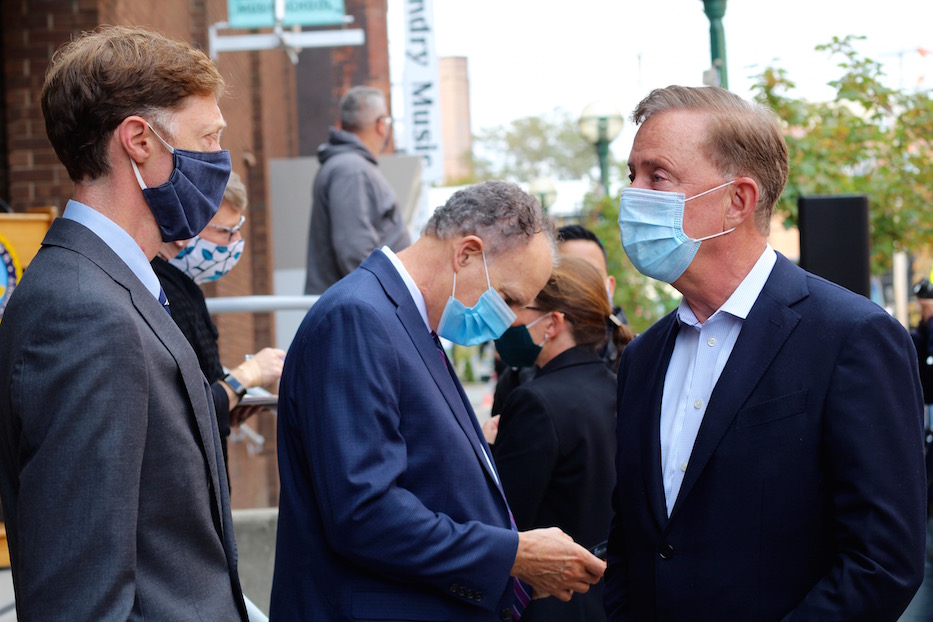
Culture & Community | Economic Development | Arts & Culture | COVID-19

An industry that has stalled during COVID-19 is getting an overdue infusion of state-administered, federal dollars. As that money is distributed, state leaders are hoping that it will be enough to keep the sector hanging on as it waits for a more substantial lifeline.
Monday, Gov. Ned Lamont announced $9 million in federal CARES act funding to arts organizations across the state, in what he has named the new COVID Relief Fund for the Arts. Starting Friday, eligible arts nonprofits may apply for a baseline grant of $5,000 in general funding, and up to an additional $750,000 in matching funds.
The state will match at 50 percent of funds raised since the start of the pandemic, meaning that an organization would need to raise $1.5 million to qualify for the maximum amount. Elizabeth Shapiro, director of arts, preservation and museums for the state, said that the $5,000 grants are meant to create a more equitable distribution of funding.
“I feel like I’m surrounded by people who are working so hard against such unbelievably difficult odds to make the arts work in Connecticut,” she said. “We talk about the arts as a connection to other human beings. I will tell you, right now, I believe that the arts is the bridge … we will need to cross this bridge to get to the next post-pandemic world.”
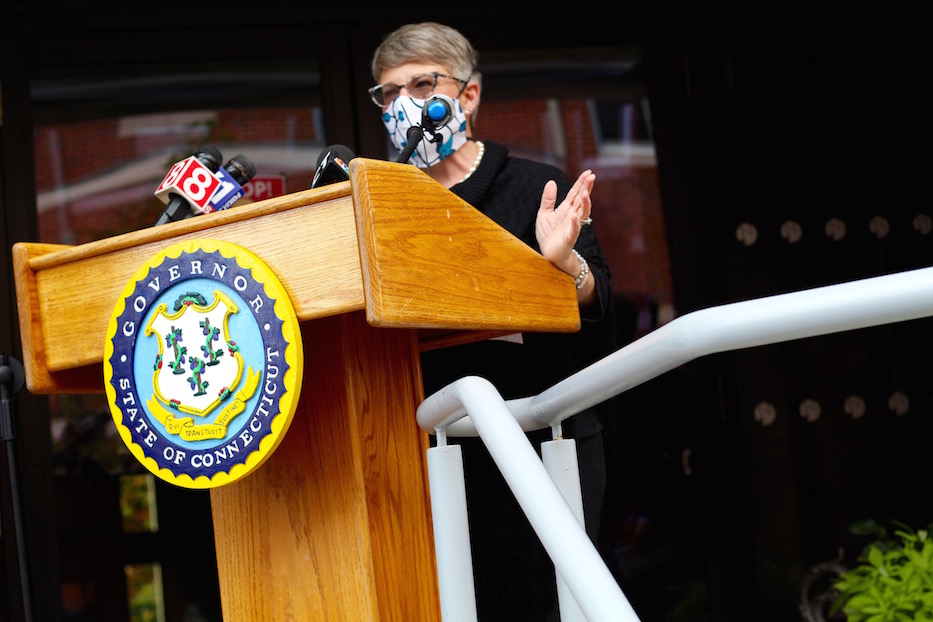
Applications for the funding open Friday morning and close at midnight on Nov. 3. The application, as well as a list of federally-mandated eligibility requirements, is available here. Shapiro said that she hopes to have funds “out the door” by December 30.
“This is an investment that’s really important economically,” Lamont said Monday, standing outside Neighborhood Music School on Audubon Street. “This is a $9 million investment that is part of our broader commitment to culture and the arts, not just the Shubert [Theatre], but also places like right where we are. What that means to young people, and what that means to neighborhoods.”
The money, which will be distributed by the Connecticut Office of the Arts, comes out of an overall $1.3 billion in federal CARES Act funding that the state received earlier this year. It is not related to the proposed Save Our Stages Act, which has stalled in Congress, nor is is to the 120 small CARES Act Emergency Relief Grants that the Office of the Arts distributed in June.
Monday, Shapiro credited Department of Economic and Community Development Commissioner David Lehman for taking the time to listen to arts organizations as they pushed for federal support of the sector. She explained that the pandemic has paralyzed cultural institutions, which before March relied largely on indoor performance, live programming, in-person education and ticket sales to meet their operating expenses.
Prior to COVID-19, the state’s arts, culture and tourism sector generated $9 billion, 57,000 jobs, and five percent of Connecticut’s economy. Exactly a month before shutdowns, the state appropriations committee had finalized arts line item funding in the state budget. When COVID-19 hit, arts venues were some of the first to close their doors.
Now, many are struggling to make it. Across the state, several have been forced to cut staff and announced hundreds of thousands of dollars in current and projected losses. While some received Paycheck Protection Program (PPP) funding earlier this year, that has since dried up.
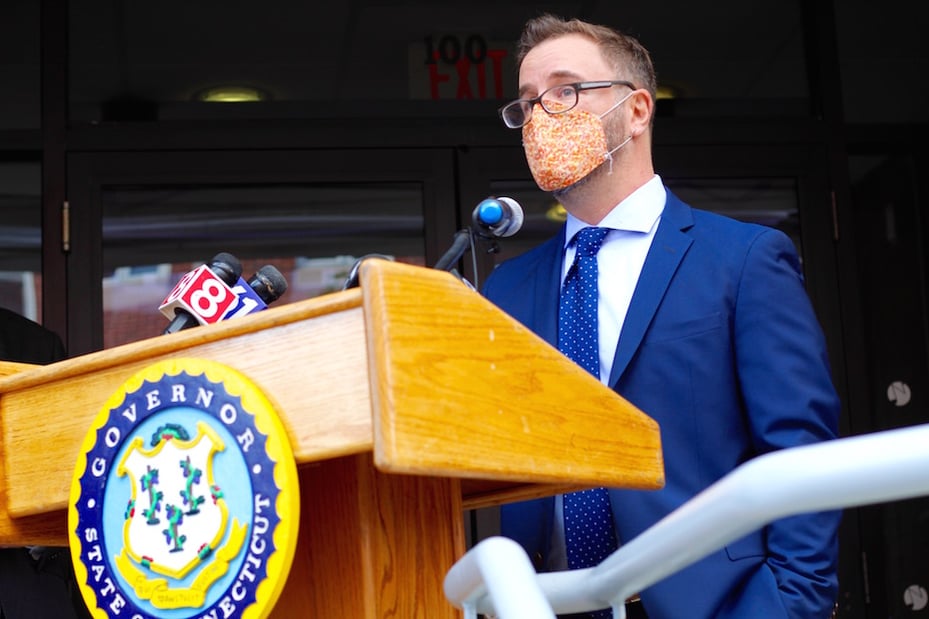
NMS Executive Director Noah Bloom.
While several of them have started virtual and limited in-person programming—Zoom readings, concerts on the water, and music lessons taught across a network of screens—much of that programming is free or low-cost. Shapiro said that even with Lamont’s phased economic reopening, some spaces may not return until June of next year.
She pointed to The Bushnell Performing Arts Center in Hartford, a 2,500-seat theater where a half capacity attendance does not make financial sense. Long Wharf Theatre, which has estimated a $2 million loss, has talked about being in the same boat even as it pivots to a member-sustained model and season that is free of its theater's two stages.
“Is this gonna fix all things for all people?” she asked. “I don’t think we’re in a situation where we can fix all things for all nonprofits, all arts agencies, or all businesses. Is this gonna help? Yes, absolutely.”
She added that she sees the funding as “the beginning” of a long and difficult recovery, rather than a quick economic fix. Per National Endowment for the Arts (NEA) guidelines, the funding is open to performing arts centers, performing groups, and educational institutions broadly defined as “schools of the arts.” It is open only to nonprofits per NEA funding guidelines.
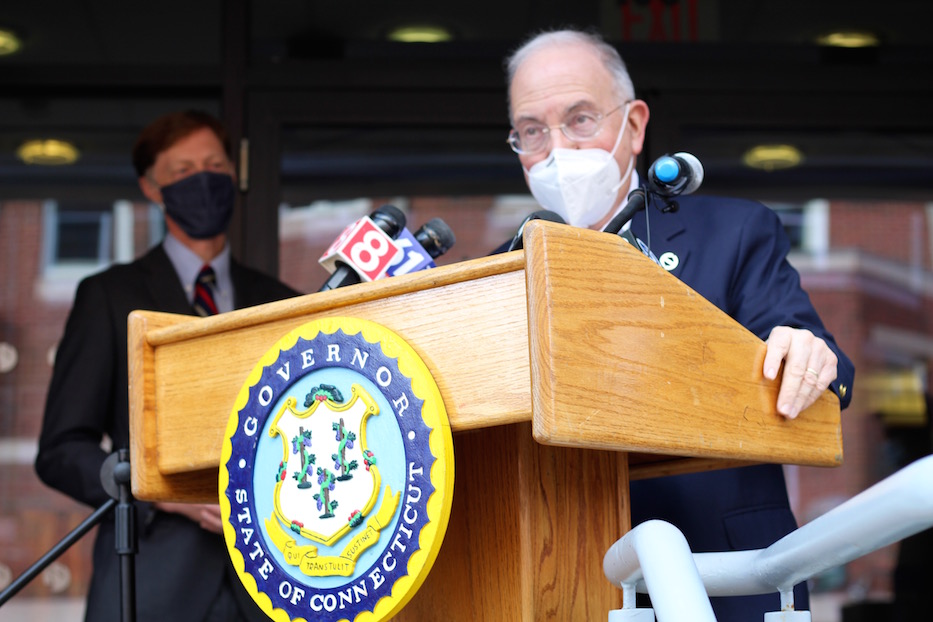
Monday, speakers and attendees called the funding integral to not only economic recovery, but also to education, civility, and cross-cultural understanding. State Sen. Martin Looney praised statewide arts organizations as spaces that contribute to both the spiritual and financial wellbeing of Connecticut, and of the country. He spoke candidly about how much he misses going to the Yale Repertory Theatre and Yale University Art Gallery, noting that New Haven is the cultural capital of the state.
“We all know that arts have a humanizing effect in a community, and we have seen too much of a dehumanizing effect in our nation of course for the last four years, during the time of the Trump Administration,” he said. “What we are trying to do, of course, is to counteract that in Connecticut. It has been particularly hard for arts organizations … that have been devastated.”
Mayor Justin Elicker called the funding a chance to both support a struggling sector and connect “to each other as humans.” He noted that the arts have been important to him as both mayor and as a dad to his daughters April and Molly, who are two and five years old respectively.
.jpg)
As mayor, he has watched the arts play an ongoing role in community engagement and economic development, even and especially in the thick of the pandemic. He praised Cultural Affairs Director Adriane Jefferson for her work, which has included the Greater New Haven Sector Relief Fund, launch of the #TogetherNewHaven and Mask It Up campaigns, arts for anti-racism pledge and a cultural equity plan that is currently in the works.
As a dad, Elicker also turns to the arts at least once a week, during Saturday “music nights” for his family. At home, he pulls out his guitar and gives the girls harmonicas. The act of playing together lets him re-center himself, he said.
“It’s one of the moments in the week that I look most forward to, because it allows us to connect with each other in a way that day-to-day life just doesn’t,” he said. “To find joy, to also tap into sorrow in a different way, community connection, to also find peace with each other, to break down those barriers that we often have between us as humans.”
“That's Our Charge”
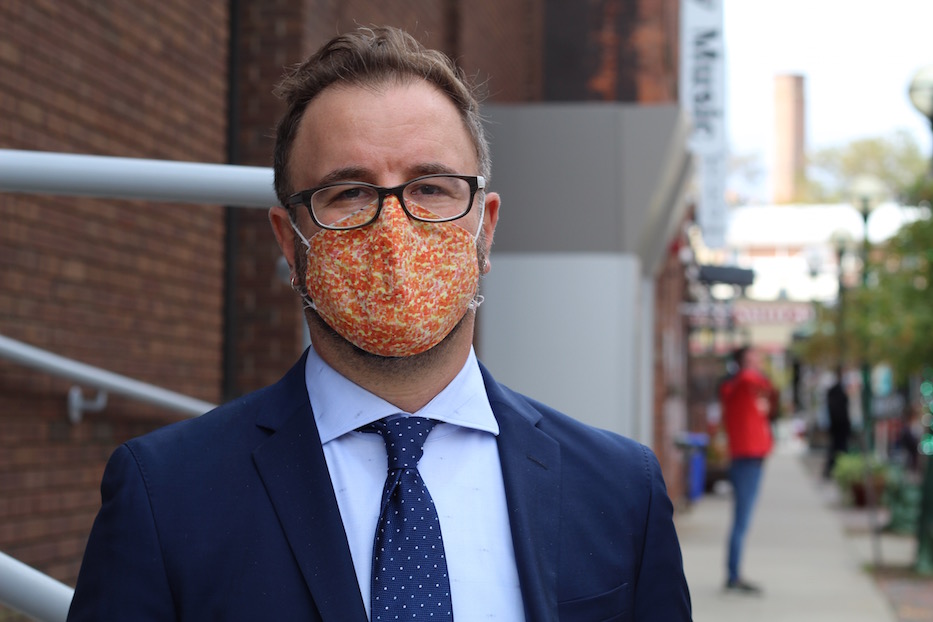
Several arts leaders in attendance echoed the excitement for the fund, and said they are also hopeful that it can act as a lifeline to the sector as they continue to push for more federal and state funding. Noah Bloom, who became executive director of Neighborhood Music School last year, painted the arts as both an educational and economic driver without which the state cannot recover from COVID-19.
“The downfall of every great civilization directly correlates with the decrease in arts funding,” he said during the press conference, quoting U.S. Sen. Chris Murphy as he spoke. “So we are grateful that today, Governor Lamont is doubling down on keeping the great civilization of Connecticut alive by continuing to invest in the arts.”
The school desperately needs that infusion of support, he added in a discussion after the conference. In a normal year, NMS serves approximately 2,500 students and employs hundreds of working teachers as full- and part-time arts educators. It drives economic activity for the street—NMS parents frequent Koffee? next door and the shops and restaurants across Whitney Avenue. He recalled a conversation with the owner of a nearby furniture store, who made $200,000 in toy sales last year and attributed much of that to NMS.
Since March 13, however, NMS has been running on a skeleton crew. This fall, it welcomed back students in its preschool and independent middle school, but has kept one-on-one private lessons and all ensemble arts classes online. While it did receive PPP funding, Bloom said it has not been eligible for most other state and federal relief funding. Of the 2,500 students enrolled before the pandemic, only about 1,000 have returned. He said that federal support would go to immediate relief, scholarships, and possibly infrastructure for outdoor classrooms.
“Anytime there’s any support for the arts I feel optimistic,” he said. “But we’re hurting. We’ve found a model where we can survive in the short term. We don’t know what the long term looks like. Obviously, this [funding’ will be a huge lifeline.”
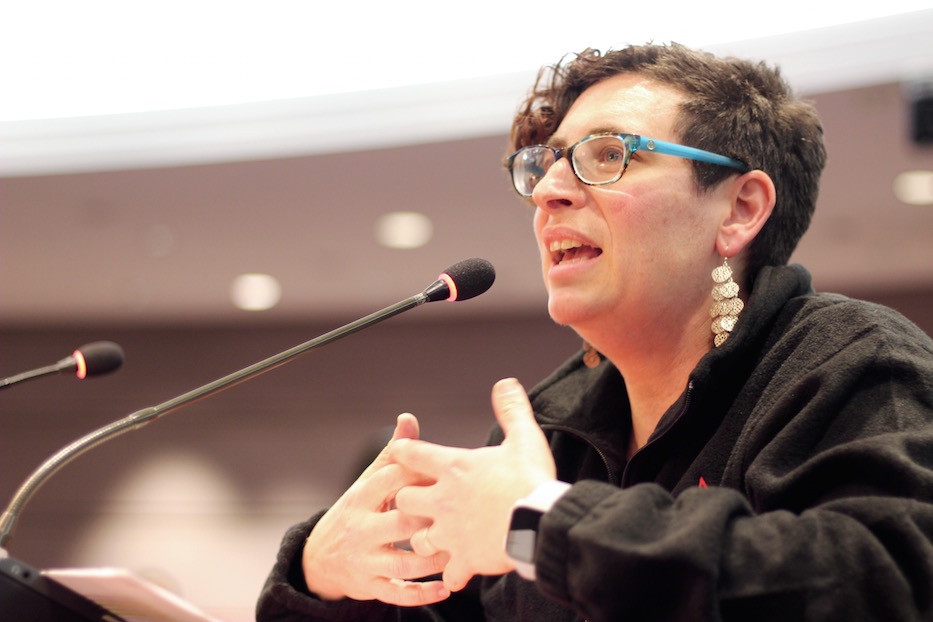
Jackson testifies in Hartford for line item funding earlier this year.
Mandi Jackson, executive director of Music Haven, said that she is also excited to see “this scale of investment in the arts.” When the pandemic hit, Music Haven had just secured two years of line item funding in the state budget. Now, she said, she worries that funding is totally gone. Meanwhile, the organization has continued to provide virtual, tuition-free lessons to approximately 80 students, pay its resident musicians, and provide extra help for families where it can.
While operating costs have gone down at some organizations—those who have cut travel and broken their leases on office space, for instance—Music Haven’s have gone up. Jackson makes sure employees have health insurance and are adequately compensated as working artists. In the last year, the organization’s operating budget was $663,500. Any federal funding will go towards keeping staff employed and students learning.
“We still have to pay our rent and we have to pay our staff,” she said. “That can’t go anywhere. We think it’s really important to keep providing our students with the programming that they have grown up with.”
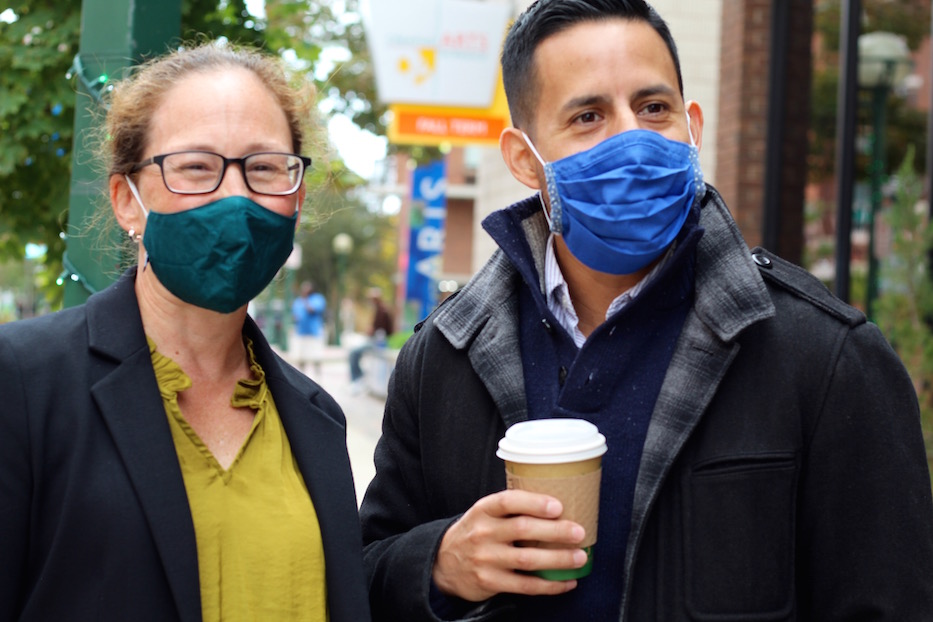
Kit Ingui, managing director at Long Wharf Theatre, said she agrees with Shapiro’s suggestion that the fund is the beginning of a much longer recovery. For both her and Artistic Director Jacob Padrón, the first priority will be maintaining staff and compensating working artists. The theater recently launched its 2020-2021 season, including an upcoming live performance from the artist Zulynette in Edgerton Park.
“We’re going to need significantly more support,” she said, noting the need for unrestricted general operating funds. “But grateful for the support. The majority of us have been able to do nothing since this happened, and that is not by our choosing. That is by state guidelines.”
“Putting money in the pocket of artists continues to be critical at this time,” Padrón chimed in. “I think it’s also about continuing to build infrastructure and build culture. A key component to that is really centering the work of inclusion and anti-racism, and you have to put money behind that work. It can’t just be a value proposition.”
“We’re trying to get on a path to sustainability,” he added. “That’s our charge.”
To watch the full press conference, click on the video below.

